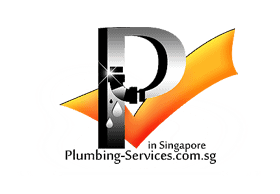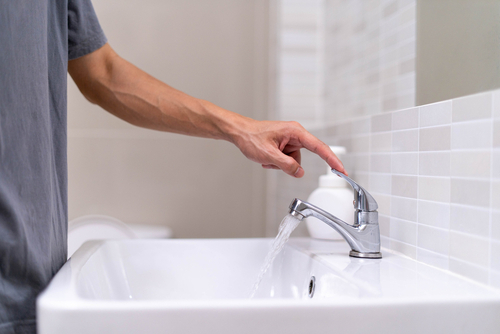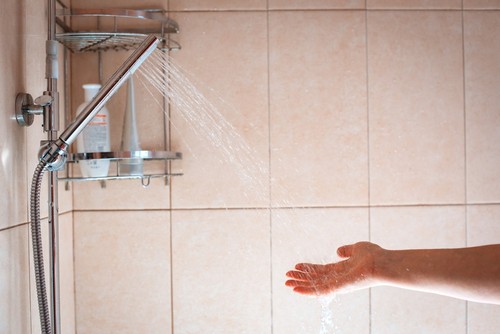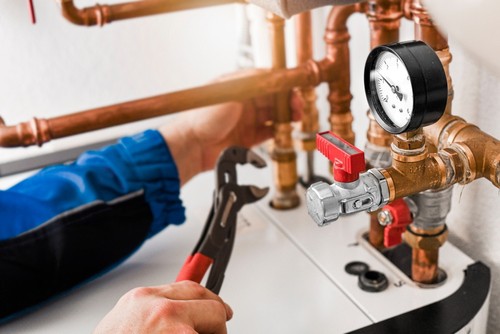How to Plan Plumbing for New Home Construction?
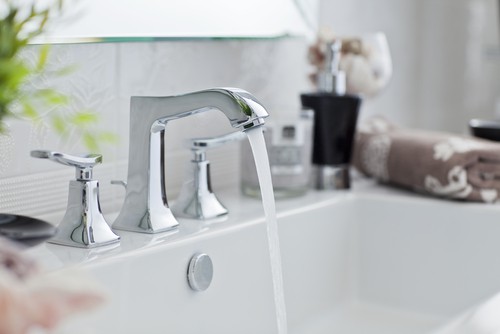
How to Plan Plumbing for New Home Construction
How to Plan Plumbing for New Home Construction? Building a new home is a significant project, and one of the key components is planning the plumbing.
Comprehensive plumbing planning is crucial as it can impact the functionality and comfort of the new home.
Properly planned and executed plumbing ensures efficient water supply and waste disposal, thereby contributing to the home’s overall functionality. It also helps prevent potential plumbing problems in the future.
This article will serve as a comprehensive guide for Singapore homeowners, builders, and developers. It will provide step-by-step guidelines for planning and executing plumbing in new home construction.
Read on – How to Plan Plumbing for New Home Construction?
Collaborating with Design Professionals
Collaborating with architects and designers from the early stages of the home construction process is crucial. This will ensure the plumbing system is seamlessly integrated into the home design.
During the initial planning phases, discuss your specific plumbing requirements and potential layouts with the architect. This will allow you to optimize the plumbing design for your specific needs.
Once the home’s basic design has been decided, integrate the plumbing plans with the overall home design. This includes the locations of bathrooms, kitchens, laundry areas, and outdoor water sources.
Assessing Water Supply and Drainage Needs
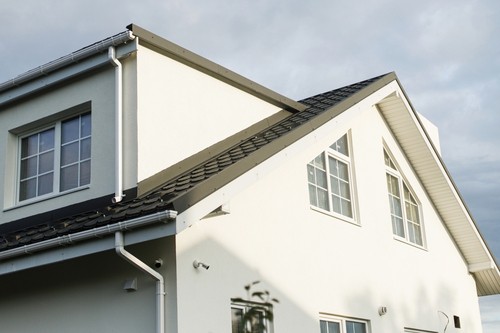
Conduct a detailed water demand analysis before you begin with the plumbing plan. This should consider the total number of bathrooms, kitchen fixtures, and outdoor watering needs.
Based on the water demand analysis, determine the appropriate pipe sizes to ensure efficient water supply. A professional plumber can assist with this calculation.
Drainage is another critical component of your home’s plumbing system. Plan an efficient drainage system that will adequately dispose of all wastewater.
Designing Plumbing Layouts
Outlining Plumbing Fixture Locations in Each Room
Design the plumbing layout considering the locations of fixtures in each room. This should include sinks, toilets, showers, and appliances that need a water supply.
Planning for Kitchen, Bathroom, and Laundry Room Plumbing
Give special attention to the plumbing required for the kitchen, bathrooms, and laundry room. These areas often have multiple plumbing fixtures and appliances that require water supply and drainage.
Allocating Space for Water Heaters and Water Storage Tanks
Don’t forget to allocate space for water heaters and water storage tanks. Consider the best location for these components based on the overall home design and your specific needs.
Selecting Quality Plumbing Materials

Choose durable and certified pipes and fittings for your plumbing system. This will ensure your plumbing system’s longevity and reliability.
Select corrosion-resistant and lead-free components to ensure a safe and clean water supply. This is especially important for the pipes and fittings that will be used for the potable water supply.
While cost is always a consideration, prioritize the longevity and reliability of materials when selecting plumbing components. This may result in higher upfront costs but can save money in the long run due to reduced maintenance and repairs.
Hiring Licensed and Experienced Plumbers
Identifying Qualified Plumbing Contractors
Hire a licensed and experienced plumbing contractor to execute the plumbing plan. They should have a good understanding of the local building regulations and standards.
Checking Plumbers’ Licenses and Certifications
Always check the licenses and certifications of the plumbers you hire. In Singapore, plumbers must be licensed by the Public Utilities Board (PUB).
Professionals perform ensuring Plumbing Work
Entrust the plumbing work to professionals. This is not a place to cut corners, as poorly executed plumbing can lead to serious problems down the line.
Executing Water Supply System Installation

Installing Main Water Line and Water Meters
The plumber will begin by installing the main water line and water meter. The main water line will connect your home to the municipal water supply.
Positioning Water Tanks and Pressure Regulators
The water tanks and pressure regulators should be installed next. These components will ensure a steady supply of water to the home.
Connecting Water Supply Lines to Fixtures
Once the main water supply components are in place, the plumber will connect the water supply lines to the fixtures in the home.
Implementing Drainage and Sewage Systems
Installing Drain Pipes and Sewer Lines
The plumber will then install the drain pipes and sewer lines. These components will carry wastewater away from the home.
Proper Ventilation for Drainage Systems
Proper ventilation is crucial for efficient drainage. Vent pipes prevent sewer gases from entering the home and help maintain proper drainage flow.
Incorporating Floor Drains and Waste Outlets
The plumbing design should incorporate floor drains and waste outlets to handle overflow and spillage, particularly in the kitchen, bathroom, and laundry areas.
Plumbing for Kitchen and Bathroom Fixtures
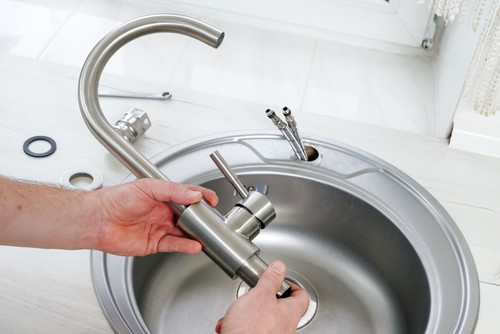
Installing Kitchen Sink Plumbing and Dishwashers
Plumbing for the kitchen sink and dishwasher should be installed carefully to ensure efficient water supply and drainage.
Connecting Plumbing for Toilets, Showers, and Bathtubs
The plumber will then connect the plumbing for the toilets, showers, and bathtubs. Proper venting should be ensured for each fixture.
Ensuring Proper Venting for Each Fixture
Proper venting is essential for the efficient operation of all fixtures. It helps maintain proper drainage flow and prevents sewer gases from entering the home.
Incorporating Water Heaters and Filtration
Selecting and Installing Water Heaters
Based on your preference, select a suitable water heater and have it installed. In Singapore, storage and instant water heaters are commonly used.
Integrating Water Filtration Systems for Safe Drinking Water
Consider integrating a water filtration system into your home’s plumbing. This will ensure a safe and clean supply of drinking water.
Considering Solar Water Heaters for Energy Efficiency
For energy efficiency, consider using solar water heaters. While the upfront cost may be higher, the savings in energy bills over time can make it a cost-effective choice.
Performing Plumbing Inspections
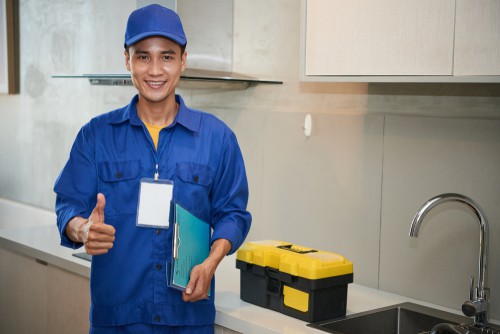
Conducting Pre-Completion Plumbing Inspections
Before finalizing the plumbing connections, conduct a pre-completion plumbing inspection. This will help identify any deficiencies or leaks that need to be addressed.
Addressing Any Plumbing Deficiencies or Leaks
If any deficiencies or leaks are found during the inspection, they should be addressed immediately. Ensuring a high standard of workmanship at this stage can save costly repairs in the future.
Ensuring Proper Functionality of All Plumbing Systems
Ensure the proper functionality of all plumbing systems. This includes checking all fixtures for leaks and verifying adequate water pressure.
Finalizing Plumbing Connections
Connecting Plumbing to Main Sewer and Water Lines
The final step is to connect your home’s plumbing to the main sewer and water lines. A licensed plumber should do this to ensure compliance with local regulations.
Labelling Plumbing Valves and Shut-Offs
Once all plumbing connections have been made, label all valves and shut-offs. This will make it easier to identify and operate them in a plumbing emergency.
Conducting Final Checks for Safety and Compliance
After all plumbing connections have been finalized, conduct a final check for safety and compliance with local regulations.
How to Plan Plumbing for New Home Construction? – Conclusion
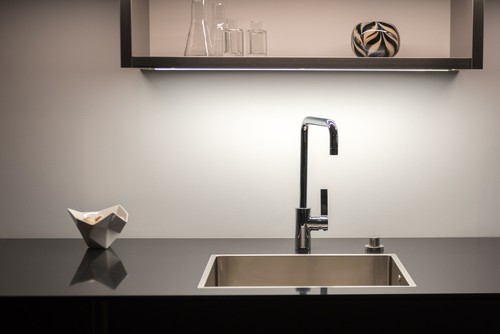
We’ve walked through planning and executing plumbing for new home construction.
We’ve covered everything from collaborating with professionals, assessing water supply and drainage needs, designing layouts, obtaining permits, selecting materials, hiring plumbers, executing installations, incorporating fixtures, and performing inspections to finalizing connections.
As highlighted throughout this guide, professional plumbing installation is critical for the comfort and functionality of your home.
A well-executed plumbing plan ensures efficient water supply and waste disposal, thereby contributing to a comfortable and functional home.
Lastly, we encourage all homebuilders to prioritize quality plumbing. Investing in quality materials and professional plumbing services can save a lot of trouble and costs in the future.
Our team of experienced and licensed plumbers in Singapore is ready to help you with all your plumbing needs.
From initial planning to final execution, we guarantee top-quality work that complies with all local regulations and standards.
Don’t compromise on the quality and safety of your new home’s plumbing; get in touch with us today!
Ready to start planning your new home construction’s plumbing? Contact us today!
